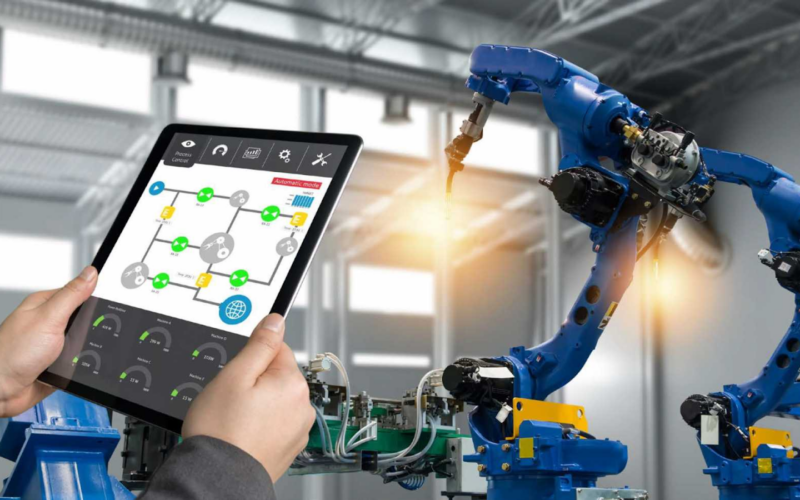On October 20, 2025, AWS US-EAST-1 experienced a stumble, and a wave hit the internet. Zoom and Slack slowed or failed, consumer apps blinked out, and dashboards filled with errors. DNS trouble and network load balancer issues cascaded across services. The lesson was blunt. A single region’s hiccup can disrupt entire businesses.
Cloud automation is how you cut blast radius and recover faster. It standardizes provisioning, enforces guardrails, scales on demand, self-heals, and records compliance by default.
This blog explores cloud automation features, tools, use cases, ownership, unified orchestration benefits, and future trends.
Key Takeaways
- Cloud automation standardizes provisioning, scaling, monitoring, and compliance so hybrid and multi-cloud estates stay stable, fast, and auditable.
- Orchestration integrates multiple automated tasks into comprehensive end-to-end workflows, whereas meta orchestration enables policy and visibility across clouds from a single control plane.
- Priority use cases include elastic e-commerce scaling, automated compliance in healthcare and BFSI, rapid DevOps environments, and automated disaster recovery.
- A unified orchestration layer breaks tool silos, centralizes compliance, unifies metrics and costs, and reduces delays between teams..
What Powers Cloud Automation in Modern IT?
Cloud automation is the operational layer that keeps enterprise infrastructure consistent, compliant, and ready to scale. It brings predictability to tasks that used to rely on manual effort or tribal knowledge.
Below are the features and benefits that define mature automation in large IT environments.
1. Policy-Driven and Versioned Infrastructure Provisioning
Instead of ad-hoc scripts and tribal IT knowledge, automation uses templates and Infrastructure-as-Code (IaC) that are versioned, reviewed, and auditable.
Research shows organizations using IaC saw environment provisioning drop from days to hours and a 70% reduction in configuration errors.
Value for enterprises:
- Enables faster onboarding of projects and services.
- Restores environments after failure using the exact same configuration.
- Ensures changes go through code review and regression testing.
2. Auto-Scaling and Load Management
Systems automatically adjust resources based on demand. During traffic spikes, new instances are created; when demand drops, unused capacity is released. This keeps performance steady and avoids overpaying for idle infrastructure.
Value for enterprises:
- Maintains uptime during peak loads
- Prevents waste through dynamic resource allocation
- Improves customer experience under unpredictable workloads
3. Continuous Monitoring, Alerts & Self-Healing
Beyond deployment, automation remains active. It watches key metrics, triggers automated remediation, and logs all triggers. A study on enterprise cloud infrastructure automation found dramatic reductions in mean-time-to-repair (MTTR) and unplanned downtime through these practices.
Value for enterprises:
- Detects issues before they become outages
- Reduces mean time to resolution
- Frees teams from manual incident response
4. Security and Compliance Enforcement
Cloud automation applies security controls as part of the deployment process. Policies enforce encryption, identity rules, and access permissions automatically. Compliance reports are generated from audit-ready logs rather than manual reviews.
Value for enterprises:
- Reduces audit preparation time
- Prevents accidental policy violations
- Strengthens regulatory accountability
5. Self-Healing Infrastructure
Automated recovery scripts detect failures and restore services without human intervention. Whether it’s restarting failed nodes or rerouting traffic, systems respond in real time, reducing downtime.
Value for enterprises:
- Minimizes business disruption
- Keeps SLAs intact
- Builds resilience across distributed systems
6. Cost and Resource Optimization
Automation tools analyze usage patterns and identify underutilized assets. Workloads can be shifted to lower-cost options or paused when inactive. Budget visibility improves through automated cost tagging and reporting.
Value for enterprises:
- Prevents cloud sprawl
- Improves forecasting accuracy
- Enhances accountability for business units
Also Read: Business Process Automation Trends in 2025
Features need the right stack to work in production. These are the tools teams use to build, release, and run with confidence.
Tools That Drive Enterprise Cloud Automation
Cloud automation depends on a connected stack of tools that control infrastructure, configuration, workflow, and monitoring. Each layer serves a specific purpose, from provisioning and governance to orchestration and optimization.
The table below organizes these tools by function, highlighting how enterprises use them to build consistent, reliable, and compliant systems at scale.
| Category | Core tools | What it delivers |
| IaC & provisioning | Terraform, AWS CloudFormation, Pulumi | Standardized environments, versioned templates, repeatable builds |
| Configuration management | Ansible, Chef, Puppet | Consistent system state, drift control, automated updates at scale |
| Workflow & orchestration | Kubernetes, Jenkins, GitLab CI/CD | Reliable releases, rollout automation, and container scheduling |
| Monitoring & observability | Datadog, New Relic, Dynatrace | Unified metrics, early issue detection, and auto-remediation triggers |
| Service orchestration platforms (SOAP) | BMC Helix, ServiceNow, VMware Aria | Cross-tool coordination, policy enforcement, audit-ready governance |
Ready to see what your team could achieve without routine slowing them down? Codewave helps enterprises replace repetitive, manual work with AI-driven automation and RPA, freeing teams to focus on innovation and customer value. From data processing to compliance tracking and support workflows, we design automation that boosts speed, accuracy, and experience.
Even strong tools can fail without clear roles in the workflow. Let’s separate task execution from end-to-end coordination and see where each fits.
Cloud Automation vs. Cloud Orchestration – What’s the Real Difference?
Enterprises often use automation and orchestration as if they mean the same thing, but they solve different layers of the same problem. Understanding how they interact helps teams plan systems that are scalable, predictable, and easier to manage across clouds.
1. Automation: Executing Individual Tasks Efficiently
Automation handles one task at a time, such as deploying a virtual machine, patching a server, or running a backup. Each action runs based on defined rules or triggers. The goal is consistency and speed without manual effort.
Example: Automatically starting a new instance when CPU usage crosses a threshold or provisioning a development environment from a template.
Enterprise impact:
- Reduces human error in repetitive activities
- Shortens delivery cycles for standard processes
- Frees teams to focus on planning and optimization rather than execution
2. Orchestration: Connecting Automated Tasks Into a Workflow
Orchestration brings structure to automation by sequencing multiple automated steps into a complete process. Instead of isolated actions, it coordinates dependencies.
For example, provisioning infrastructure, deploying code, configuring monitoring, and notifying teams when complete.
Example: A CI/CD pipeline that builds, tests, deploys, and monitors an application end-to-end.
Enterprise impact:
- Provides repeatable, policy-driven workflows
- Creates transparency across development, operations, and compliance
- Aligns resource allocation and approvals with business priorities
3. Meta Orchestration: Control Across Multi-Cloud Environments
As enterprises expand across AWS, Azure, GCP, and private data centers, orchestration itself needs a higher layer of coordination.
Meta orchestration manages multiple orchestrators and automations from one control plane. It ensures policies, security, and compliance apply consistently across environments.
Example: A central orchestrator that provisions workloads across multiple clouds based on cost, region, or regulatory policy.
Enterprise impact:
- Eliminates duplication between cloud teams
- Maintains unified governance for compliance and cost control
- Provides visibility into performance, spend, and risk across platforms
Why the Distinction Matters
Automation improves individual processes. Orchestration shapes how those processes work together. Meta orchestration keeps them aligned as systems scale.
Enterprises that design around this hierarchy gain stability, reduce management overhead, and maintain full visibility into operations across their hybrid and multi-cloud environments.
Also Read: Building Applications in the Cloud: A Step-By-Step Guide
Use Cases That Show Real Enterprise Impact
Cloud automation is valuable when it turns complex, manual processes into predictable and measurable outcomes. Enterprises across sectors are using automation to improve availability, reduce operational overhead, and strengthen compliance.
The following use cases illustrate where the impact is most visible:
1. Dynamic Workload Scaling for E-commerce Platforms
When customer traffic spikes during events like flash sales or holiday shopping, manual scaling cannot keep pace. Automation enables real-time provisioning of compute and storage resources, and automatic decommissioning when the surge ends.
One study notes enterprise multi-cloud environments without automation pay up to 30 % more due to over-provisioning and inefficient workload management.
2. Automated Compliance for Healthcare and BFSI Sectors
Regulated industries require strict controls on data access, encryption, logging, and audit trails. Automation embeds those controls into deployment workflows. Servers launch only when policy is satisfied, permissions adjust automatically, and audit logs capture every change.
For cloud disaster recovery scenarios, automation minimizes human error in failover and restores operations within required Recovery Time Objectives (RTOs) and Recovery Point Objectives (RPOs)
3. Rapid Provisioning in DevOps Pipelines
Enterprises scaling agile development need new environments, builds, and releases deployed on demand. Automation enables “infrastructure as code” (IaC) to spin up dev/test/production stacks with consistent configurations.
An e-commerce case study showed self-serve VM provisioning plus automated OS/configuration cut setup time and eliminated manual VM creation errors.
4. Disaster Recovery Automation for Global Systems
Traditional DR plans rely on standby infrastructure, manual failover, and lengthy recovery tests. With automation, organizations can replicate data across regions or clouds, automatically trigger failover workflows when an outage is detected, and continuously test recovery readiness.
Reports highlight that cloud-based DR automation reduces exposure to regional outages, ransomware, and service disruptions.
Still waiting months for your website to go live? Codewave builds modern, high-speed web apps that launch 3x faster and cost 30% less with our Code Accelerate framework — a proven library of pre-built, enterprise-grade components.
Also Read: Understanding the AI Development Process
Why Unified Orchestration Matters to Large Enterprises
When each business unit uses its own automation and orchestration tools, the result is tool silos, slow hand-offs, and fragmented visibility. Large enterprises require coordination across infrastructure, applications, security, and compliance to keep digital operations running efficiently.
Unified orchestration ties these pieces together and delivers measurable gains in cost control, risk reduction, and performance.
1. Breaking Tool Silos
- Many enterprises still run dozens of point solutions for provisioning, networking, security, and analytics. Each works well alone, but they don’t coordinate. According to a study, less than 35% of network changes are fully automated due to the need for manual coordination.
2. Centralized Compliance
- Enterprises face growing demands for regulatory, operational, and security compliance. A unified orchestration framework ensures policies are defined once and applied everywhere—on-prem, public cloud, edge environments.
- A Microsoft Azure guidance states that shared tools and processes are key to eliminating silos between infrastructure, cloud, and application teams.
3. Unified Visibility and Performance Optimization
- Disparate automation leads to fragmented monitoring, with one team overseeing infrastructure, another managing release pipelines, and a third handling cost analytics. Unified orchestration compiles data into one view.
- One analysis found that unified data orchestration can cut cloud costs by up to 40% by providing visibility into idle resources and redundant workflows.
4. Reduced Operational Friction Across Teams
- When DevOps, security, compliance, and infrastructure each maintain different automation tool sets, hand-offs slow down. Unified orchestration standardizes workflow APIs and common models, enabling teams to collaborate without silos.
- Analysts report that orchestration platforms reduce the time IT spends coordinating between teams by over 25%.
Beyond Automation – Building Intelligent Cloud Governance
As enterprises scale cloud initiatives, simply automating individual tasks is no longer sufficient. They must elevate governance to guide decisions, enforce policies, and provide clear accountability across all infrastructure. Intelligent cloud governance transforms automation into a strategic asset.
1. Policy-Driven Compliance
Governance begins with establishing rules that encompass deployment standards, data residency, identity management, encryption, and access controls. These rules are embedded in automation workflows, so every new resource adheres to enterprise policy.
For example, platforms now support policy templates that apply across multiple clouds and on-premises systems.
- Value delivered: Policies applied consistently reduce audit workload and lower the risk of non-compliance without slowing delivery.
2. AI-Enabled Decision-Making in Provisioning and Scaling
Modern governance frameworks incorporate AI models that analyze historical usage, cost patterns, workload demands, and compliance incidents. Based on that data, the system recommends or initiates provisioning and scaling actions.
According to research, enterprises that still manage AI or cloud resources with static rules face slower production and a higher risk.
- Value delivered: Decisions become predictive—resources scale before demand spikes, policy violations are flagged early, and spend is optimized proactively.
3. Real-Time Visibility into Cloud Spending and Security
Governance isn’t only about rules—it’s also about insight. Dashboards that aggregate cost, performance, security, and compliance data provide actionable visibility.
For example, a governance solution that automates cloud account management integrates cost control, security posture, and audit readiness.
- Value delivered: Stakeholders see exactly where they stand, whether cost overruns, policy drift, or security gaps and can act before issues escalate.
How Codewave Supports Enterprise Cloud Automation
Codewave applies design thinking and AI-driven engineering to modernize enterprise operations through automation. With over 400 digitization projects across 15 countries, the company focuses on making automation outcomes measurable, achieving faster delivery, reducing operational costs, and ensuring consistent compliance.
Integrated Approach
Automation is designed around how enterprises actually work, spanning people, processes, and platforms.
Codewave combines process automation, digital transformation, and custom software development to replace repetitive workflows with intelligent, policy-based execution.
- Maps business processes before selecting automation tools.
- Builds reusable components for provisioning, scaling, and monitoring.
- Aligns automation outcomes with KPIs like uptime, release speed, and security compliance.
Technology Stack
Codewave teams work across major automation and orchestration layers:
- Cloud Infrastructure & Automation: AWS, Azure, GCP, Kubernetes, Terraform, Jenkins, Ansible.
- Monitoring & Testing: Automation Testing, QA Testing, Penetration and Vulnerability Testing, Datadog, New Relic.
- AI & Analytics: AI/ML, Agentic AI, and data analytics for predictive scaling, intelligent remediation, and optimization.
Enterprise Value Delivered
- Operational efficiency: Shorter release cycles and consistent deployments.
- Governance: Automated compliance and risk monitoring across multi-cloud environments.
- Cost control: Dynamic provisioning and resource optimization reduce waste.
- Resilience: Self-healing systems maintain uptime during outages.
Codewave helps large organizations move from traditional operations to intelligent, adaptive systems that respond in real time. Explore our portfolio to see how automation, AI, and design thinking create measurable impact for enterprises.
Conclusion
Enterprises need more than scripts. They need automation, orchestration, and governance to work together seamlessly. In 2025, value comes from policy-driven provisioning, unified observability, and AI that predicts demand, rightsizes capacity, and prevents drift. SOAP platforms connect tools and teams.
Meta orchestration aligns multi-cloud policies, cost, and security with clear ownership and audit trails. The result is steadier uptime, faster releases, and spend you can defend.
Codewave empowers enterprises to design and implement automation that goes beyond simple tasks. By integrating Agentic AI, cloud orchestration, and design thinking, we create intelligent systems that are scalable and reliable.
Ready for a cleaner, faster cloud? Contact us today to discover how we develop reliable, compliant systems that drive enterprise growth.
FAQs
Q: How do we measure ROI from cloud automation beyond infrastructure savings?
A: Track cycle time to deploy, change failure rate, mean time to recovery, and policy adherence rates alongside cost. Include business metrics such as order conversion during traffic spikes and call center handle time after workflow automation. Tie each initiative to a baseline and report deltas monthly.
Q: What skills should we build first to avoid delays and rework?
A: Start with Infrastructure as Code, CI/CD pipeline engineering, and policy as code for security. Add observability fundamentals so teams can act on signals, not opinions. Create a small platform team that owns templates, standards, and a shared automation backlog.
Q: How do we manage vendor lock-in while using managed cloud services?
A: Keep application definitions and infrastructure in portable formats such as containers and IaC. Abstract cloud specifics with orchestration and policy layers that support multiple providers. Test exit paths by running the same workload on at least two environments during non-production cycles.
Q: Where does human approval fit once workflows are automated?
A: Insert approvals at risk points rather than every step. Examples include production deploys, policy exceptions, and cost thresholds. Use contextual evidence in approval tasks such as change diffs, test results, security checks, and forecasted spend so decisions are fast and defensible.
Q: How should we approach data residency and compliance in multi-cloud setups?
A: Encode residency and retention rules as policy modules that gate provisioning. Tag data and workloads with region and sensitivity, then route deployments only to compliant locations. Automate evidence collection so auditors can trace policy, workload, and controls without manual hunts.
Codewave is a UX first design thinking & digital transformation services company, designing & engineering innovative mobile apps, cloud, & edge solutions.







